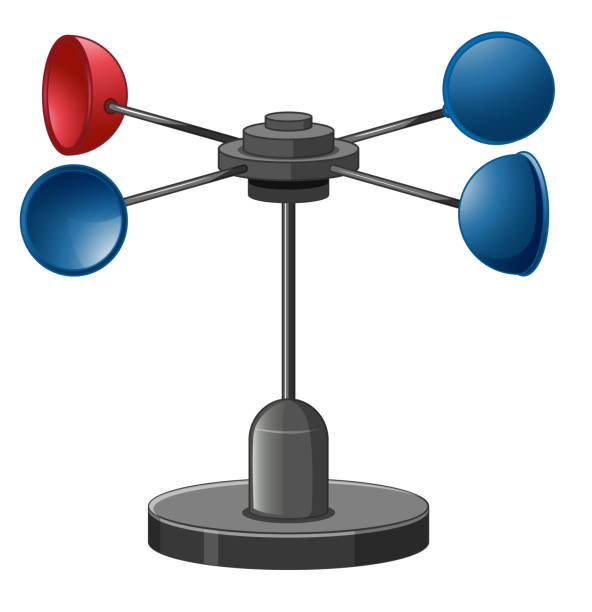Contrasting Digital and Mechanical Anemometers: Which is Right for You?
Contrasting Digital and Mechanical Anemometers: Which is Right for You?
Blog Article
Exploring the Functions and Benefits of Anemometers for Weather Condition Lovers and Experts
Anemometers stand as important tools in the realm of climate monitoring, accommodating both lovers and skilled specialists alike. These devices provide a window into the vibrant globe of wind patterns and speeds, giving invaluable information for meteorological analysis and projecting. From cup anemometers to sonic anemometers, each type brings its special collection of applications and advantages, clarifying various facets of weather. As we look into the features and advantages of anemometers, a deeper understanding arises not just of prevailing weather condition sensations but also of the broader implications for industries like wind energy manufacturing and environmental study.
Value of Anemometers in Weather Condition Surveillance
Anemometers play an important function in weather condition monitoring by supplying precise dimensions of wind rate, assisting in projecting and understanding weather condition patterns. These tools, ranging from typical cup anemometers to modern-day ultrasonic anemometers, are necessary for meteorologists, scientists, and weather condition enthusiasts alike. By determining wind speed, anemometers assist in identifying the intensity of weather sensations such as tornados, hurricanes, and hurricanes. Furthermore, they offer useful information for aviation, maritime operations, and different sectors that are sensitive to wind problems.

Sorts Of Anemometers and Their Applications
The most usual types of anemometers consist of cup anemometers, vane anemometers, hot-wire anemometers, and ultrasonic anemometers. Mug anemometers consist of 3 or four mugs mounted on straight arms that rotate with the wind, gauging its speed. Vane anemometers, on the various other hand, utilize an openly rotating vane to line up with the wind instructions, offering both wind rate and direction dimensions.
Cup anemometers are durable and ideal for general weather condition surveillance, while vane anemometers are preferred for directional measurements. Ultrasonic anemometers are non-intrusive and supply high accuracy, commonly made use of in research study and specialized climate surveillance applications.
Advantages of Using Anemometers in Projecting
In meteorology, the use of anemometers uses vital benefits for enhancing the accuracy of weather condition projecting. Anemometers measure wind rate and direction, providing important data for anticipating weather patterns. By integrating wind data right into projecting versions, meteorologists can much better understand the activity of weather condition systems, expect changes in climatic problems, and concern a lot more accurate forecasts.
Moreover, anemometers play an essential duty in analyzing possible weather condition risks. Keeping track of wind rates assists forecasters predict extreme weather occasions such as typhoons, tornadoes, and wintertime storms with better precision. This early caution system allows authorities to issue prompt notifies and apply needed precaution, decreasing the dangers click to life and property.
In addition, anemometers assist in maximizing renewable power production. By examining wind patterns, meteorologists can determine ideal locations for wind ranches and predict power result, adding to the reliable generation of wind power.

Anemometers in Wind Power Production
Given the important duty anemometers play in offering precise wind information for weather projecting and hazard evaluation, their significance encompasses the world of wind energy manufacturing. Anemometers are necessary tools in the field of wind energy, where the measurement of wind rate and direction is important for establishing the usefulness and performance of wind generator installations. By properly measuring wind speeds at varying elevations, anemometers assist maximize the positioning and layout of wind generators to make best use of power result.
In wind ranches, anemometers are purposefully positioned to accumulate real-time wind information that is utilized to examine the possible power manufacturing of a site. This data is important in figuring out the economic stability of wind power tasks and in projecting power generation to guarantee grid stability. Additionally, anemometers aid in keeping track of wind problems to enhance wind turbine performance, prevent damages from high winds, and make sure the security of personnel operating in the area of wind turbines.
Enhancing Weather Understanding With Anemometers

Anemometers play a crucial function in boosting our understanding of microclimates. These local weather can differ significantly from broader local forecasts, making it crucial to have exact information for certain areas. anemometer. By tactically putting anemometers in various locations, researchers can gather thorough details on just how wind behaves in different terrains, city atmospheres, or bodies of water
Additionally, anemometers contribute to improving climate projecting designs by providing real-time information on wind actions. This info is particularly valuable for forecasting severe weather occasions, enhancing agricultural techniques, and supporting industries like aviation and maritime navigation. Overall, anemometers are invaluable tools that enable us to dive deeper right into the intricacies of weather condition systems, eventually bring about even more better-informed choices and accurate forecasts.
Final Thought
In conclusion, anemometers play a critical function in climate surveillance and forecasting by measuring wind rate and direction. Anemometers also have applications in wind energy manufacturing, further highlighting their relevance in both weather forecasting and renewable energy markets.
From mug anemometers to sonic anemometers, each kind brings its unique set of applications and benefits, shedding light on various aspects of atmospheric conditions. These tools, varying from typical mug anemometers to modern ultrasonic anemometers, are necessary for meteorologists, scientists, and climate fanatics alike. The most common types of anemometers include cup anemometers, vane anemometers, hot-wire anemometers, and ultrasonic anemometers. Cup anemometers are robust and appropriate for general weather condition tracking, while vane anemometers are preferred for directional measurements. Anemometers additional resources are necessary tools in the area of wind energy, where the measurement of wind speed and direction is essential for figuring out the expediency and effectiveness of wind turbine installments.
Report this page